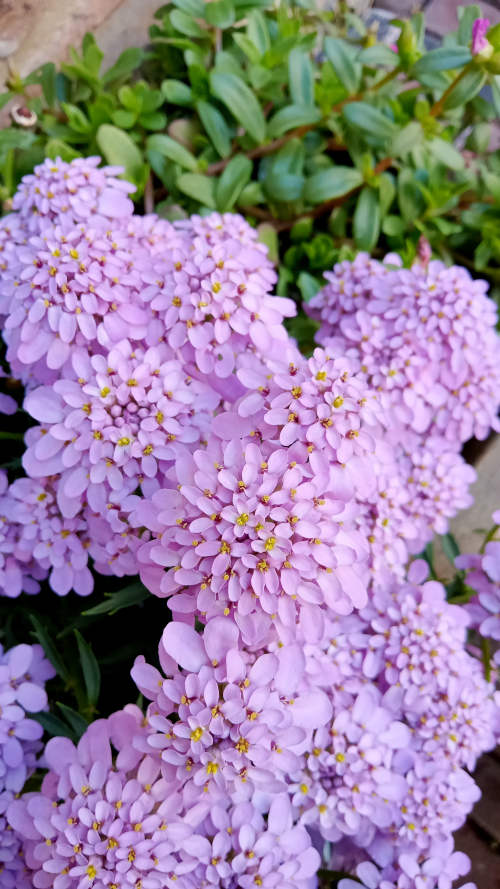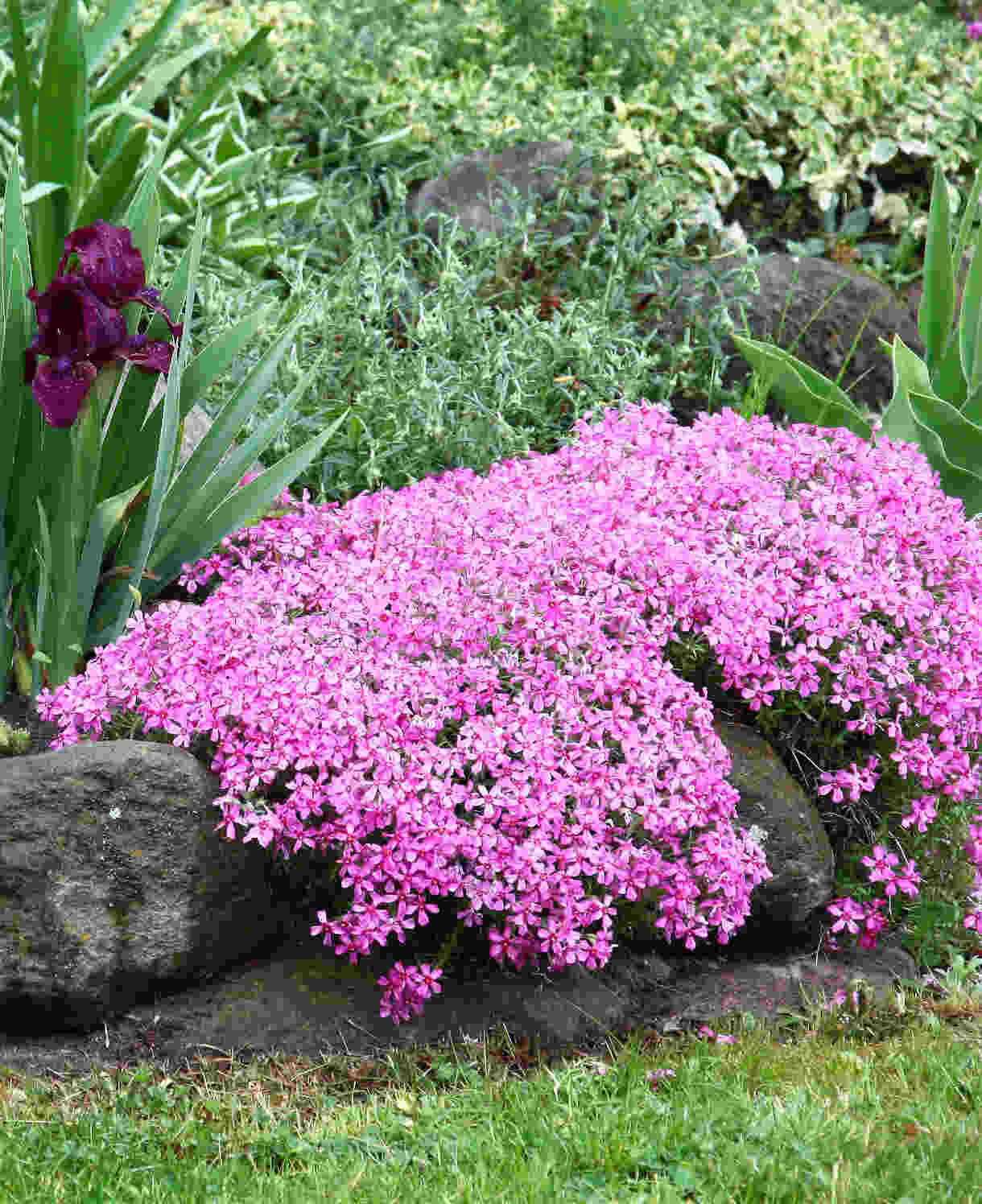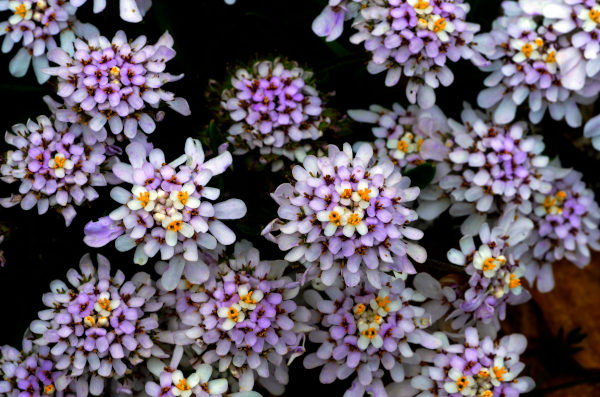How to grow Iberis
Hailing from open, free-draining sites in poor, chalky soil, iberis is a petite, spreading member of the brassicaceae family. It is grown for its profusion of pollinator-friendly flowers produced over a long period, and an easy, drought-tolerant nature. Most popular among gardeners is the perennial species Iberis sempervirens, although annual species and many hybrids and cultivars are also available. Flowers can be found in a range of colours including pink, white, and purple.
Iberis is also known by the common name, candytuft.

Zantedeschia is a genus of flowering plants from the family Araceae and is native to southern Africa. With a rich history dating back to the Ancient Romans, these deciduous or semi-evergreen perennials have been used as a symbol of celebration. Zantedeschia was Named after Professor Giovanni Zantedeschia, an Italian botanist.
There are two main forms of Zantedeschia: hardy and tender. Hardy forms of the plant can be grown outdoors, enjoy moist soil and full sun or partially shaded conditions - these are known as Arum lilies. Tender forms of Zantedeschia prefer being grown in containers or pots and should be brought inside over the winter - these are known as Calla lilies.
With tuberous flora in all colours from whites, yellows and oranges to deep reds and purples, Zantedeschias are not to be overlooked in any garden, as long as they have sufficient sunlight to grow in.
Ready to learn more about growing Zantedeschia? Read on for all there is to know...

Key Information
Soil pH
Position
Hardiness

Horticultural Divisions-
Species | Plant type |
Iberis sempervirens | Evergreen subshrub |
Iberis umbellata | Annual |
Iberis amara | Annual |
Iberis saxatilis | Evergreen subshrub |
Iberis semperflorens | Evergreen subshrub |

Where & when to plant Iberis
Position - As sunny as possible. Light, dappled shade will be tolerated though is likely to result in fewer flowers. Some cultivars are better suited to this than others – Iberis ‘Mermaid Lavender’ is said to do particularly well in partial shade.
Soil - Grows well in poor to moderately fertile, moist yet well-draining soil, ideally with a neutral to alkaline pH (though will tolerate some acidity). Drought tolerant once established.
Flowering Period - Mainly summer, sometimes stretching to late spring and early autumn.
Hardiness - Hardy even in a cold UK winter. Rated H5 (-10°C to -15°C) or H6 (-15°C to -20°C), depending on the species or cultivar.
For best results, plant perennial iberis in autumn or spring. An autumn planting can be done by those gardening in mild conditions (and broadly speaking, this is the southern half of the UK). For those liable to cold winters, it is best to wait until spring (generally the northern half of the UK). Planting can also be carried out in summer, though be prepared to water regularly.
Annual iberis can either be grown from seed directly sown in autumn or spring, or as young plug plants planted out in late spring.
With its dense, creeping habit, iberis makes excellent weed-suppressing ground cover in rock gardens or along the front of a sunny, well-draining border. It can also be used to cascade over walls, tumble along steps, or spill over the edge of a container.
How to plant Iberis
- For planting in the garden, dig the soil area removing weeds and breaking up any lumps. If your soil is on the heavy side, now is the time to add a generous helping of horticultural grit. Rake level and firm with your heels. Rake level again.
- Water plants well and allow to drain before planting.
- A good tip is to dig a hole twice the size of the root-ball. Fill with water and allow to drain before placing in the plant.
- Place the plant in the hole, ensuring the top of the root ball sits level with the surface of the soil. Too low and the plant may rot, too high and the roots can dry out.
- Backfill with soil and firm in gently with your foot.
- Soak well with water.
- Mulch around the base with well-rotted organic matter.
- For planting in containers, first choose an appropriately sized pot. You may wish to grow your iberis on its own in a pot just a few centimetres larger than the rootball, or as part of a larger, mixed container display. Either way, ensure there are plenty of drainage holes in the bottom.
- If you are using a large or heavy pot, it can be a good idea to fill and plant it in situ to save yourself the trouble of moving once full.
- Use a good quality potting compost with a generous amount of horticultural grit mixed in, and, if not already present in the compost (check the description on the bag) some slow-release fertiliser granules.
- Start by partially filling the pot with compost; enough so that when placed on it the upper surface of the root ball is about 3cm lower than the top of the pot.
- Infill all the space surrounding the root ball with compost, firming down with your fingers then adding a little more so the plant is held tight.
- Pick up the container and lightly tap on the potting bench or ground a few times to help further settle the compost around the plant.
- Soak well with water.
- A mulch with horticultural grit will look attractive and help to prevent a ‘cap’ or crust forming on the top of the compost (something container plants can suffer due to the artificial nature of their watering).

What to plant with Iberis
Plant with similarly low growing, spreading companions to achieve a mosaic of colour on walls and rockeries. Our top picks for this include aubrieta, lobelia, creeping phlox, helianthemum, and arenaria.
If you would like any further planting ideas or growing advice for your iberis, please contact our friendly and knowledgeable Customer Care Team - we will be more than happy to help you.



How to care for Iberis
Pruning and Deadheading
Trim subshrubs and perennials lightly after flowering to maintain a compact shape. Tired looking plants can be cut back to 10cm in spring to promote fresh new growth.
Remove annual species to the compost heap in autumn.
Watering
Iberis should be watered regularly until established. After this it tends to be drought tolerant, meaning you can generally leave it to its own devices.
Container-grown iberis requires ongoing attention. Water regularly during each growing season, allowing the top few centimetres of compost to dry out between soakings. Insert your finger into the compost to check this. From mid-autumn, the British climate tends to take over watering needs, though do remember to step in in the event of an unseasonably dry spell.
Feeding
Iberis grows well in low-nutrient conditions, meaning that an annual mulch of well-rotted organic matter (i.e., a layer of manure or garden compost applied to the soil around the plant) should provide more than enough nutrition for perennial species. Mulching has the added benefit of suppressing weeds, locking in moisture, and, if carried out in autumn (highly recommended), offering extra protection from the cold.
Container-grown plants need a little more attention when it comes to feeding. Get off to a flying start by making sure you use a good quality compost, then throughout the growing season (March to September) apply a quarter-strength liquid feed at regular intervals. Alternatively, top dress with a general purpose granular feed in spring.
Annual species grown in open ground will thank you for a light mulch of well-rotted organic matter on planting. In a container, some slow-release granules mixed into the compost should suffice for the whole growing season.
Cold Protection
Iberis is hardy and able to withstand even a cold UK winter without the need for additional protection. Even so, an insulating autumn mulch is recommended to promote plenty of lush, healthy growth in spring.
Like all plants, those grown in containers can be more vulnerable to the cold. In the event of low temperatures, it can be worth wrapping pots with hessian or fleece (this will protect the pot from cracking too).
Pests and Diseases
Iberis tends to be largely pest and disease free, though you may find slugs and snails develop a taste for its leaves, particularly when young. Encouraging natural predators into your garden, such as birds, frogs, toads, and hedgehogs, will make a big difference. Torchlight searches after dark (when slugs and snails are at their most active) are also effective, allowing you to collect the offending molluscs in a bucket and dispose of as you see fit. Relocating to a nearby woods or bagging up and putting in your freezer before popping them in the bin are said to be the most humane approaches.
Like most plants, once iberis is established it is better able to tolerate the actions of slugs and snails without the need for intervention.
How to propagate Iberis
Perennial and subshrub species can be propagated by cuttings, taken any time from late spring to late summer.
- Find non-flowered shoots 5-10cm long and snip off the plant.
- Put them in a plastic bag straight away to prevent drying out.
- Fill a container with a compost mix which is at least 50% perlite (or if you prefer, as we do, 100% perlite).
- Trim the end of the cutting to just below a node (point at which leaves grow).
- Remove the lowest third of leaves.
- If the remaining leaves are large, cut them in half with a sharp knife (to reduce water lost through transpiration).
- Insert the cuttings into the compost and water lightly. Several cuttings can be put in the same container if there is enough space to do this without them touching.
- Place in a propagating unit with bottom heat if you have one, or covered with a plastic bag on a windowsill or in a greenhouse if not (out of direct sunlight).
- Keep the cuttings misted and occasionally watered until they root. You will know this has happened when roots emerge out of the bottom of the container.
- Gently remove rooted cuttings and pot them into individual pots. Grow on in a cool yet frost-free environment such as an unheated conservatory, greenhouse, or cold frame, until they are large enough to be planted out.
* Many plants carry Plant Breeders Rights and cannot be propagated for commercial purposes.
Common Iberis questions
Does iberis come back every year?
All the iberis currently offered by Hayloft are evergreen perennials, meaning they remain a permanent, year-round presence in the garden.
Annual species last for one growing season only.
Is candytuft easy to grow?
Offering masses of flowers and a tough, reliable performance in return for very little input, iberis is one of the easiest garden plants to grow, and in fact is often suggested as a starter plant for children or beginners.





